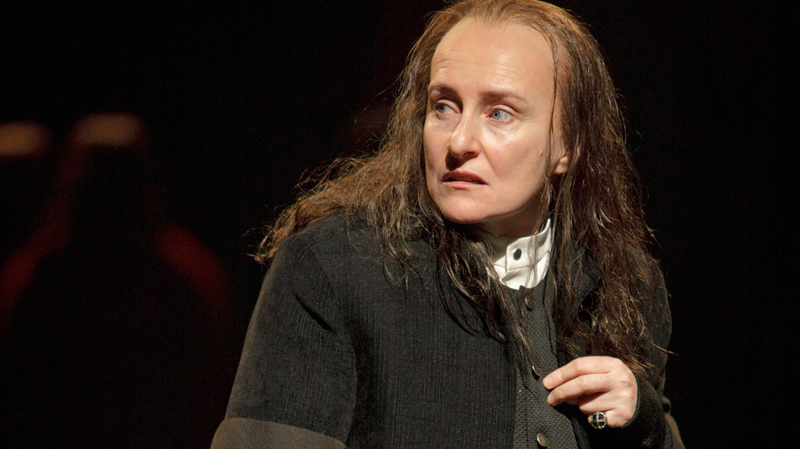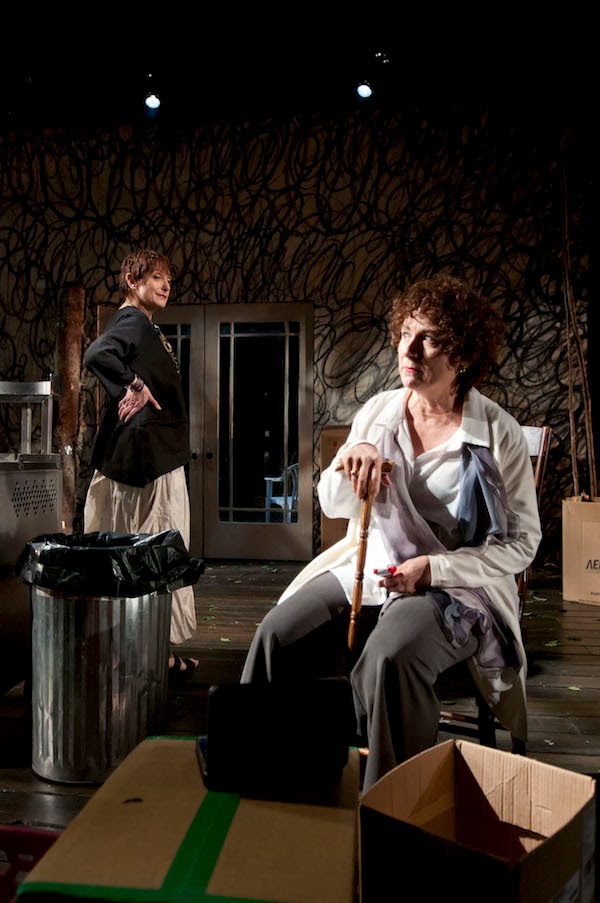
Women in Canadian theatre are an oppressed majority, and it’s everyone’s problem that a group of people who make up 51% of the population and 59% of audiences are still underrepresented onstage and backstage*. I am arguing for an active approach to gender equality in theatre. Even if your company’s mandate is to produce classical plays by “dead white guys” and you have a mostly male ensemble, you can still play a part. If artists continue to assume that it’s “someone else’s fight”, this problem won’t be resolved soon. In order to achieve gender parity in theatre we need to get all theatres involved (not just self-branded “feminist” companies), we need to start telling more “people’s stories” as well as “women’s stories”, and audiences must be made aware of the disparity so they can join the conversation.
Many theatre creators focus on increasing the number of “women’s stories” onstage. While I certainly agree that we need more plays written by women and with female creative teams and casts, that is only part of the solution. The term “women’s stories” is also limiting; referring to all work that includes the perspectives and experiences of women as “women’s stories” suggests that plays with female characters are a niche market. Furthermore, the term implies that stories about women are separate from stories about men, which actually re-ingrains the gender binary. The general branding of “women’s stories” is what leads to seasons with one all-female show and five more shows that hardly involve women. This is connected to the larger cultural concept that women can identify with male protagonists, but men cannot identify with female protagonists; a concept which is played out in theatre when some directors happily produce 400-year-old plays about murderers and kings set 1000 years ago on a different continent, but the same directors express hesitation about “connecting with” the characters in female-driven plays. As well as producing more “women’s stories”, theatres should find ways to transform some of the many “men’s stories” they produce into “people’s stories”.
Theatres’ desire to change can often be hindered by financial concerns. There are many well-known, beautifully written, male-authored classical plays that feature mostly/entirely male characters. These plays often have better name recognition with audiences, making them less of a financial risk. However, a company with a season full of classical plays can (and should) still play a role in gender parity. Most obviously this can be done through the inclusion of women (and people of colour) on the creative team, and through colourblind/genderblind casting. While non-traditional casting might not make sense for all plays, it’s important to evaluate whether this kind of casting actually doesn’t work in your production, or if it’s been dismissed for a superficial reason.

A recent example of genderblind casting is Peter Hinton’s production of The Seagull at the Segal Centre this month, in which Diane D’Aquila played the role of Sorina (originally Sorin), giving the show a balanced cast of 5 women and 5 men. Another Hinton production that comes to mind is his 2008 staging of Taming of the Shrew at the Stratford Festival in which Lucy Peacock played a female Grumio. The Festival also produced Miles Potter’s Richard III in 2011 starring Seana McKenna. In these stagings, women were given more stage time and agency without the productions being branded (one might even say “dismissed”) as “women’s stories”- although whether that is because of the male directors, the fact that only one role was switched in each case, or the superstar actresses involved is up for debate.
Some directors who do not engage in genderblind casting suggest that audiences aren’t invested enough in gender equality onstage, and would be confused by it**. However, if audiences aren’t vocal about this issue, it’s at least partly because they aren’t aware of the inequality onstage and backstage. Growing up watching theatre, film and tv, audiences have been trained to accept mostly-male casts as normal. Theatres should take responsibility to inform their audiences about the gender inequality (or equality) in their productions.
Even with a play like Waiting for Godot (which legally cannot be performed by women), theatres can still contribute by raising audience awareness. One strategy that could be used is the creation of a basic notation system in theatre programs- sort of a diversity “report card” in the vein of Sweden’s new feminist rating system for films . This system could be a section of the program that breaks down statistics about diversity on and offstage, including the number/variety of women (and people of colour) represented onstage; and how they are represented. This system would increase audience awareness about gender imbalance, and could be used to track progress over seasons.
In addition to a program notes system, there are many other ways to encourage feminist dialogues about a production. For example, to complement classic plays in their seasons, theatres could stage readings of a feminist/female playwright’s adaptation (ex: a reading of Djanet Sears’ Harlem Duet to complement a staging of Othello). Another way to inform the audience could be creating a lobby display or website page that looks at the play’s history/characters/themes/ from a feminist perspective.
This article is not meant to discredit theatre pieces that are “women’s stories” or “men’s stories”, both of which are necessary and important in a balanced culture. However, whether or not it is intended, companies that choose to produce seasons of only “men’s stories” without comment are contributing to the symbolic annihilation of women. If theatre creators of all genders can work together to create more “people’s stories”, as well as “women’s stories”, and invite audiences to join in the conversation, the problem of gender equality in theatre might become a problem of the past.
*Anyone interested in more detailed statistics should check out Rebecca Burton’s report “Adding it Up: The Status of Women in Canadian Theatre“.
** There are many other reasons, of course, but I could spend a whole article on them alone









